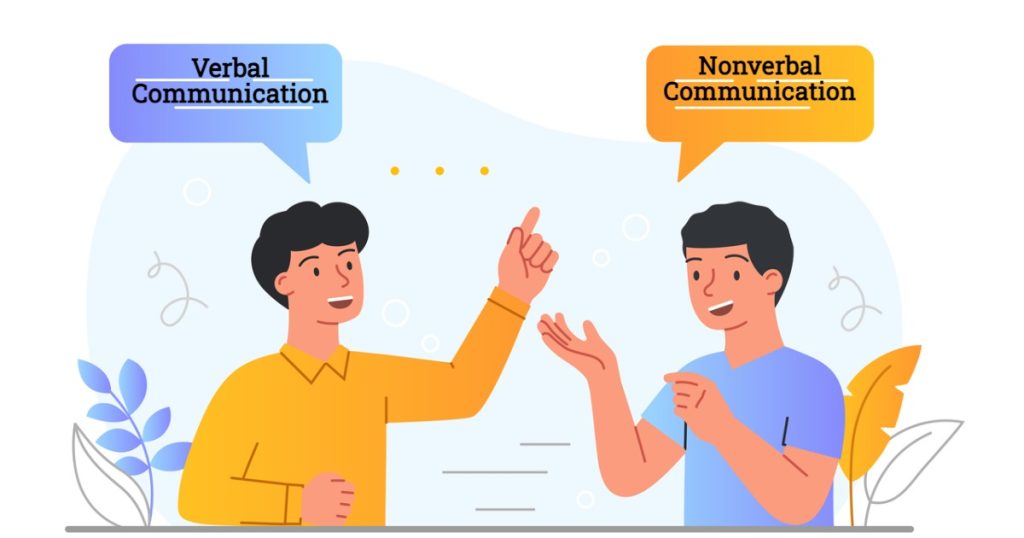Non-verbal communication plays a crucial role in human interaction, often conveying more meaning than verbal expressions alone. It encompasses facial expressions, gestures, body language, posture, eye contact, and even the tone and pitch of voice. These non-verbal cues can significantly influence how messages are perceived and understood in various contexts.
Types of Non-Verbal Communication
- Facial Expressions: The face is a powerful tool for communication, capable of displaying a wide range of emotions such as happiness, sadness, surprise, and anger. Microexpressions, fleeting facial expressions that reveal true emotions, are particularly insightful in interpersonal communication.
- Gestures: Hand movements, arm positions, and other gestures can reinforce or contradict verbal messages. For instance, a thumbs-up gesture universally signifies approval or agreement, while crossed arms might indicate defensiveness or disagreement.
- Body Language: Posture, stance, and overall body positioning provide cues about a person’s confidence, interest, and openness. Leaning forward during a conversation can indicate attentiveness, while slouching might suggest disinterest or fatigue.
- Eye Contact: The way individuals make eye contact—or avoid it—can reveal their level of engagement, honesty, and emotional state. In some cultures, prolonged eye contact is a sign of respect and attentiveness, whereas in others, it may be perceived as confrontational.
- Voice: Beyond spoken words, the tone, pitch, volume, and pace of speech contribute to non-verbal communication. A soothing tone can convey empathy, while a raised voice may indicate frustration or urgency.
The Cultural and Contextual Influences
Non-verbal communication is not only universal but also influenced by cultural norms and contextual factors. What is considered appropriate or respectful in one culture may be perceived differently in another. For example, a nod of the head might mean agreement in one culture and acknowledgment in another.
Importance in Professional Settings
In professional environments, non-verbal cues can impact career success and interpersonal relationships. Job interviews, meetings, and negotiations often rely heavily on non-verbal communication to assess candidates’ confidence, honesty, and suitability for a role.
Effective Communication Strategies
- Awareness: Being mindful of your own non-verbal cues and those of others can enhance communication effectiveness. Pay attention to subtle changes in body language and adjust your approach accordingly.
- Consistency: Align your verbal and non-verbal messages to avoid mixed signals. Conflicting cues can lead to misunderstandings or distrust among colleagues or clients.
- Adaptability: Recognize cultural differences and adapt your non-verbal communication style to accommodate diverse perspectives. This fosters respect and enhances cross-cultural collaboration.
Improving Non-Verbal Communication Skills
Enhancing non-verbal communication skills requires practice and self-awareness. Engaging in role-playing exercises, receiving constructive feedback, and observing effective communicators can all contribute to improving your ability to convey messages non-verbally.

Conclusion
In conclusion, non-verbal communication is a multifaceted aspect of human interaction that significantly impacts relationships, perceptions, and outcomes. By understanding and mastering non-verbal cues, individuals can become more effective communicators in both personal and professional settings. Awareness, adaptability, and consistency are key to harnessing the power of non-verbal communication for clearer, more meaningful connections.
